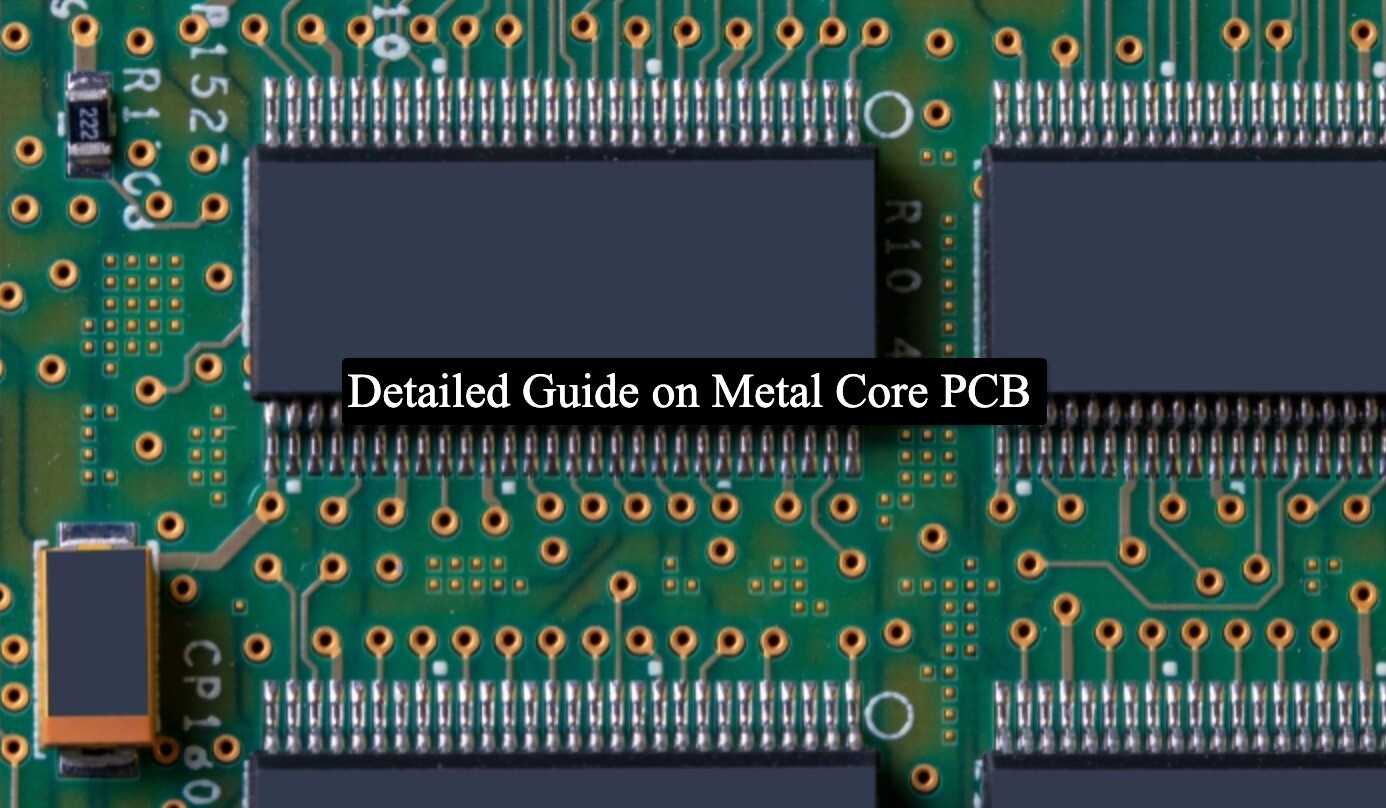
Detailed Guide on Metal Core PCB
Science and technology have come a long way to aid people at their convenience. Since the birth of light to the improved LED, the improvement is significant. LED-based goods, as well as metal core PCB, are becoming increasingly common as electrical technology advances.
LED lights are your best bet right now because they are less costly and more productive. Metal core PCB gets utilised in the automotive and lighting sectors as a result.
The issue of not being able to fully use the performance and efficiency of LEDs, on the other hand, kept us on our toes. They don’t disperse heat loss. Here is where a PCB with a metal core comes into play.
What is Metal Core PCB?
MCPCB stands for metal core printed circuit board, and it is composed of a thermal insulating coating, metal plate, and metal copper film. It is a form of PCB in which the heat carrier section of the panel, made of metal. A side of the PCB gets covered by thick metal. Metal base can apply to the metal, which generally founded in the center or backside. The core’s purpose is to divert heat away from components that generate a significant volume of heat.
A Metal Core PCB is a kind of printed circuit board with a base metal material. Metal plates and metal copper foil have exceptional magnetic conductivity, outstanding heat dissipation, good mechanical strength, and unmatched processing performance. Generally, there are aluminum and copper basis elements for metal base materials.
Aluminum PCBs are significantly more cost-effective. That is why they get utilized in LED lighting and communication electrical equipment. This is because the performance of a copper substrate is superior. However, the cost factor is always present.
Simply put, a base metal gets used to boost the thermal conductivity of a metal core PCB. The metal core gets made up of a heat-dissipating metal plate of finite width.
Metal Core PCB Materials and Thickness
It’s rare to find a specific alloy blend. In the majority of cases, the metal coat of the thermal PCB is either copper or aluminum. The aluminum core is often used in the business because the copper core PCB becomes less desired due to its high cost.
Cutting the PCB into smaller pieces might be challenging due to the hardness of the metal PCB elements. Other factors to contemplate when deciding on metal PCB materials include the chemicals used in the production method and whether the metal will interact with them.
Metal cores come in a variety of thicknesses. But don’t worry; you might be able to get your desired ones. It might be thicker or thinner than the average. Metal cores typically range in thickness from 30 mils to 120 mils. Copper foil depth on Metal Core PCBs can range from 1 to 10 oz.
Advantages of Metal core PCB
There are several advantages to using a metal core PCB, Which Lets it stand out from the rest of the field.
- Metal core PCBs provide better heat transfer than traditional design due to increased thermal conductivity and ten times less width. In addition, because of the high efficiency of thermal energy transmission, metal PCBs may employ thin copper layers, lowering both prices and solution thickness.
- Aluminum is strong and more durable than ceramic and fiberglass, which gets widely utilized in PCB construction. In addition, it is a strong metal that can help to reduce the danger of unintentional fracture during the manufacturing process.
- Metal PCBs gets made up of a dielectric coating with excellent thermal conductivity, a metal layer, and a copper film with ample heat conduction and mechanical strength, which get utilized for circuit lithography.
- In comparison to other ceramic materials, the metallic substrate provided an extended period of functioning. These PCBs improve the board’s net power of operation.
- Aluminum and copper are the most usually utilized elements for metal core PCB manufacturers. A combination of fiberglass and metal mostly gets used to create the metal layer. Metal core PCBs can be mono or double-sided, with multilayer PCBs being less popular due to their high production complexities.
- They are also unquantifiable in terms of recycling. They’re better for the environment since the metals used, like aluminum, are non-toxic and environmentally friendly. Because aluminum is so easy to extract and purify, it gets much preferred to other metals.
Applications of Metal core PCB
This technology is well suited to applications that need a great deal of energy and, as a result, produce a lot of heat. Metal PCBs gets made up of a dielectric coating with excellent thermal conductivity, which gets utilized for circuit Lithography.
Metal core PCB gets widely used due to its increased efficiency. Because metal can swiftly convey heat by eliminating it from the high-power elements, metal PCBs are often utilized in power supplies, power circuits, and LED lighting systems. Along with delivering ideal heat control, this type of technology helps components last longer. As a consequence, the circuit’s overall reliability ought to improve.
How to choose an MCPCB manufacturer?
Choosing the most suitable metal core PCB manufacturer for you is a complicated undertaking. The competition is fierce, and inexperienced producers abound. It’s a pity that the deserving ones rarely get treated equally.
The dielectric material used by the manufacturer must be quality aluminum or copper. And that substance must be able to endure high temperatures in order to safeguard circuit board elements. In addition, the manufacturer must meet the deadline for delivering the specified supplies. Furthermore, the producer must have extensive experience in the production of various PCBs.
Also read:-

